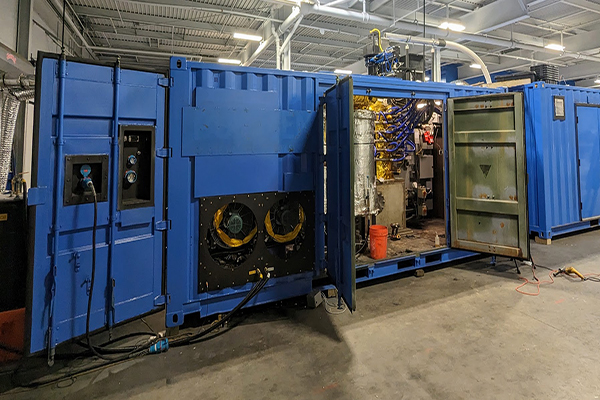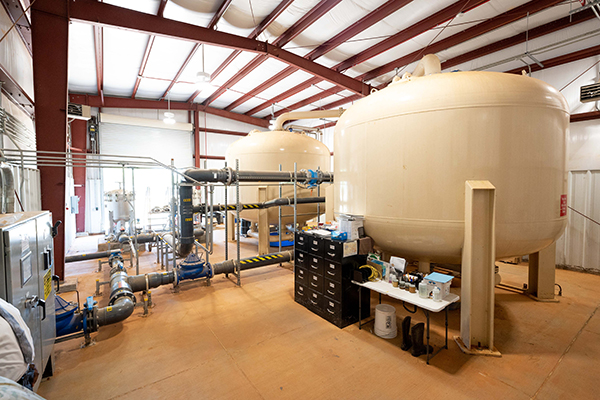By Col. Robert Sinkler, M.SAME, USA (Ret.), and Dayal Saran, Ph.D.
Rare earth elements are a group of 15 elements of the lanthanide series on the periodic table, along with scandium and yttrium. Collectively, they have similar
physical and chemical properties. While rare earth elements are found throughout the earth’s crust, they occur in low concentrations and often as a mixture of elements. For these reasons, they are difficult both to mine and recycle to high purity.
Rare earth elements also are indispensable in the production of everything from wind turbines to electric vehicles to critical defense systems such as advanced fighter aircraft and precision guided munitions. The global supply chain for these elements is comprehensively dominated by China. America’s heavy reliance on imports is a serious strategic vulnerability.
As outlined in Executive Order 14017, America’s Supply Chains, strengthening domestic supply chains and resource independence is a matter of national defense. To date, the Department of Defense (DOD) has invested over $100 million in enhancing America’s rare earth supply chain resiliency as part of its commitment to expanding domestic rare earth element processing capabilities and capacity.
Under a project sponsored by DOD’s Strategic Environmental Research & Development Program, biotechnology company Allonnia and synthetic biology company Ginkgo Bioworks are advancing the science of identifying, engineering, and producing natural and engineered proteins with high selectivity toward specific metals to extract and purify rare earth elements from manufacturing and post-consumer waste.

SUPPLY CHAIN ISSUES
Rare earth elements are used in a range of defense applications, including electronic displays, guidance systems, lasers, radar, and sonar systems. During the next 25 years, the projected annual growth rate of certain rare earth elements such as dysprosium is expected to increase up to 14 percent per year. Due to their importance in technologies that have the potential to transform how we produce, transmit, store, and conserve energy, many rare earth elements are considered energy-critical elements by the defense industry.
A recent report by the Congressional Research Service points out that from the 1960s to the 1980s, the United States was the global leader in rare earth elements. Since then, production has shifted almost entirely to China. Some estimate that China now produces about 90 to 95 percent of the world’s rare earth oxides. China is home to at least 85 percent of the global capacity to process rare earth ores into material that manufacturers can use and has a processing capacity of 220,000-T, which is estimated to be five times the combined capacity of the rest of the world. China’s current control of the rare earth elements supply chain hinders growth of renewable energy and defense technologies both in the United States and Europe and creates obvious risk in both defense industry and commercial sector supply chains.
Current technologies to reclaim rare earth elements are operationally inefficient. They have high environmental costs due to large volumes of highly
toxic chemicals, and, concerningly, are dominated by Chinese firms and their related intellectual property.
To minimize the reliance on China, the United States is pushing to re-domesticate the rare earth element supply chain and has stated a goal to utilize urban waste streams and manufacturing waste as a new source of domestic rare earth elements.
LEVERAGING NEW SOURCES
The research project underway by Allonnia and partner Ginkgo Bioworks is studying proteins that bioaccumulate rare earth elements. Identifying proteins that selectively bind to rare earth elements is the first step toward engineering organisms to accumulate these hard-to-recycle elements. The team initially plans to recover rare earth elements from post-manufacturing and recycled material in a novel and environmentally sustainable way. This work will additionally have applications with other waste streams and industrial processes to recover rare earth elements and other critical materials, meeting both defense and commercial needs.
Binding Selectivity. The primary objective of the research is to discover a suite of proteins that selectively bind rare earth elements with 100-time or higher affinity over metals commonly found in manufacturing and post-consumer e-waste. They also need to have over a five-time selective binding affinity for light rare
earth elements over heavy rare earth elements (and, conversely, a five-time selective binding affinity for heavy rare earth elements over light rare earth elements). Ginkgo Bioworks has previously screened a library of around 1,400 unique metalloproteins for their ability to selectively bind terbium and dysprosium over iron.
This resulted in the identification of around 16 protein sequences that have five-time higher affinity for terbium or dysprosium. Current work is focused on the biophysical characterization of these proteins. This includes testing their binding affinities and selectivity for various lanthanides, pH, and temperature stabilities. Following that, efforts will be directed to engineering and optimizing proteins for greater affinity for individual elements and operational capability under a range of environmental conditions.
The research also includes an extensive biophysical characterization on proteins that bind the lanthanide metals dysprosium and terbium. The project team is determining the binding affinities and selectivities of 16 rare earth element binding proteins identified in previous work for the energy critical elements praseodymium, neodymium, europium, terbium, dysprosium, and yttrium. The functional performance of each protein will be evaluated in conditions typical of waste streams and industrial processes. Quantified rare earth element binding parameters will be compared to the project primary objectives. The environmental and economic benefits of replacing existing extractants with proteins then will be estimated in the sustainability analysis.
Translating Solutions. To understand the possible deployment method for these proteins, a surface display method is considered, where selected proteins are expressed on a chassis microbe like Saccharomyces cerevisiae. This increases the available surface area to capture the rare earth elements, which will translate to a solution with much greater metal binding than can be expected from naturally occurring microbes. A final deployment scenario in a bioreactor for recycling rare earth elements is envisioned.
The low rare earth element separation factors of chelators and extractants is a major reason that isolating rare earth elements to high purity is a time- and energy-intensive process that generates large amounts of waste.
The development of highly selective rare earth element-binding molecules would simplify industrial processes and reduce waste by using green technologies from synthetic biology. This bio-recycling technology, when fully developed, could serve as a means of localizing and building more cost-effective, resilient, and sustainable rare earth element-related supply chains in the United States from metals-rich waste streams.
SECURING RESOURCES
The research underway will not only help enable the United States address some critical rare earth element supply chain challenges, it will help posture the country to be a global leader in biotechnology and shift the industry closer to a circular economy.
The project can help reinforce larger efforts by the Defense Department and other federal agencies to ensure economic and national security by leveraging biotechnology to secure, strengthen, and diversify our domestic manufacturing supply chains. It is a promising model of how industry-government engagement and partnership can meet national defense needs.
More News from TME
-

Eliminating PFAS Leaching at Camp Grayling
At Camp Grayling, a novel colloidal-activated carbon material was used as a horizontal barrier on a site where aqueous film-forming foam had previously been discharged to prevent PFAS from leaching into groundwater. -

Reaching Sustainability Goals with Waste-to-Energy
The U.S. Army Engineer Research & Development Center’s Construction Engineering Research Laboratory is working to develop small-scale waste-to-energy systems that will advance installation sustainability and waste management. -

Investigating Emerging PFAS Destruction Technologies
Following recent interim guidance from the Department of Defense on how military organizations are to handle the destruction and disposal of PFAS, developing technologies that target the destruction of these forever chemicals hold possibilities for effective and efficient removal.